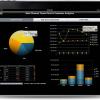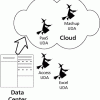Strategic advice to leverage new technologies
Technology is at the heart of nearly every enterprise, enabling new business models and strategies, and serving as the catalyst to industry convergence. Leveraging the right technology can improve business outcomes, providing intelligence and insights that help you make more informed and accurate decisions. From finding patterns in data through data science, to curating relevant insights with data analytics, to the predictive abilities and innumerable applications of AI, to solving challenging business problems with ML, NLP, and knowledge graphs, technology has brought decision-making to a more intelligent level. Keep pace with the technology trends, opportunities, applications, and real-world use cases that will move your organization closer to its transformation and business goals.
Recently Published
Five Steps to Implementing MDM
In my last Advisor ("How to Make MDM Go: Start with Architecture," 18 August 2010), I discussed the role of enterprise information architecture in Master Data Management (MDM).
BI Unwired: The Case for Mobile BI
BI Unwired: The Case for Mobile BI
In my previous Advisor (see "Enterprise Semantics: Speed-Reading Your Enterprise Data Architecture, Part I," 11 August 2010), I explained that the skills needed for doing enterprise data architecture differed from data modeling or data warehousing. In addition, I pointed out that one of the most significant differences is that of scale.
In my previous Advisor (see "Enterprise Semantics: Speed-Reading Your Enterprise Data Architecture, Part I," 11 August 2010), I explained that the skills needed for doing enterprise data architecture differed from data modeling or data warehousing.
I've been checking out a new book, Lean Integration: An Integration Factory Approach to Business Agility.
Fitting User-Developed Applications into Enterprise IT
User-developed applications (UDAs) are nothing new for the IT environment. They have been an issue for years as undocumented spreadsheets and Microsoft Access databases. They have often presented management challenges due to questions familiar to developers, such as who has ownership, who (if anyone) is responsible for upgrades, and who is responsible for verification of results.
IT is sort of caught in the middle of a debate. In one corner stands a group of researchers and enthusiasts who look at the marvels of how the human mind can make quick, accurate judgments and decisions. This group tends to look optimistically at the capabilities of the human mind to work effectively in the environment.













